Considered the birthplace of democracy and the cradle of Western civilization, here is how to spend your first visit to Athens, Greece, one of the world’s oldest cities.
Disclaimer: This post is not sponsored by any of the attractions or accommodations I include in this post.
Important Notes
This itinerary keeps in mind three full days to explore Athens. There are no time constraints in this itinerary, allowing you to explore the city and attractions at your own pace, while keeping in mind potential traffic. I also offer alternative attractions and food recommendations.
Using the Athens metro
The Athens metro is modern, efficient, and the fastest way to get around the city. There are three lines, M1 (green), M2 (red), and M3 (blue).
For visitors to Athens, there is a 3-day tourist pass to use the metro, which is €20 per person (this includes unlimited travel on all public transport for 3 days and one round-trip to/from Athens International Airport. This pass is perfect for this itinerary, especially if you are arriving by air. The metro trains to/from the airport typically run every 30-36 minutes from around 6:10am to 11:34pm. The metro station at the airport is on line 3 and connects the airport to Syntagma Square, in the Athens city center.
Don’t want the 3-day tourist pass? A single ticket for the metro costs €1.20 and remains valid for 90 minutes on all forms of public transport (just remember it doesn’t cover airport travel).
Read more here about taking the metro from the airport, and read more here about the 3-day tourist pass and getting around Athens by public transport.
Combination Tickets for Archaeological Sites
Combination tickets, tickets that were offered to visit the Acropolis and several other archaeological sites by purchasing tickets only once, have been discontinued as of April 1, 2024. It is required to purchase separate tickets for all archaeological sites you wish to visit. Tickets for archaeological sites can be purchased at the official government site here (in the search bar on the top of the screen, search for sites you want to visit). I also have links to tickets for each site below. Tickets can also be purchased at the ticket offices located at each site.
FYI: You will see many stray cats in Athens!
Day 1
The Acropolis
How to get here: Take the metro to the Monastiraki metro station and walk 10 minutes to the Acropolis. You will generally see signs for the Acropolis from Monastiraki station. While there are signs, many people find it easy to navigate by simply walking towards the Acropolis itself, which you will see from the station. There are several walking routes from Monastiraki station to the Acropolis, often leading through the Plaka neighborhood or past the Ancient Agora, which are well-trodden paths for tourists.
If you don’t see signs, follow these directions: Make a right onto Areos. Then, make a left onto Pikilis. Make a right onto Dioskouron. Continue walking on Dioskouron and make a right onto Theorias. Here, you will likely see other visitors going up the stairs to get to the entrance of the Acropolis.
No visit to Athens is complete without seeing the Acropolis! I recommend going early in the morning or during sunset to avoid the crowds. The Acropolis of Athens is an ancient citadel on a rocky outcrop above Athens. It is a complex of significant ancient structures, making it one of the most famous archaeological sites in the world and a UNESCO World Heritage site. It is about 512 feet (156 meters) above sea level, and its naturally fortified position made it an ideal defensive stronghold throughout history.
To get to the entrance to the Acropolis and throughout your visit, you will have to walk up a lot of uphill stairs. Wear comfortable shoes! Tickets cost €30 per person. Buy tickets on the official website here.
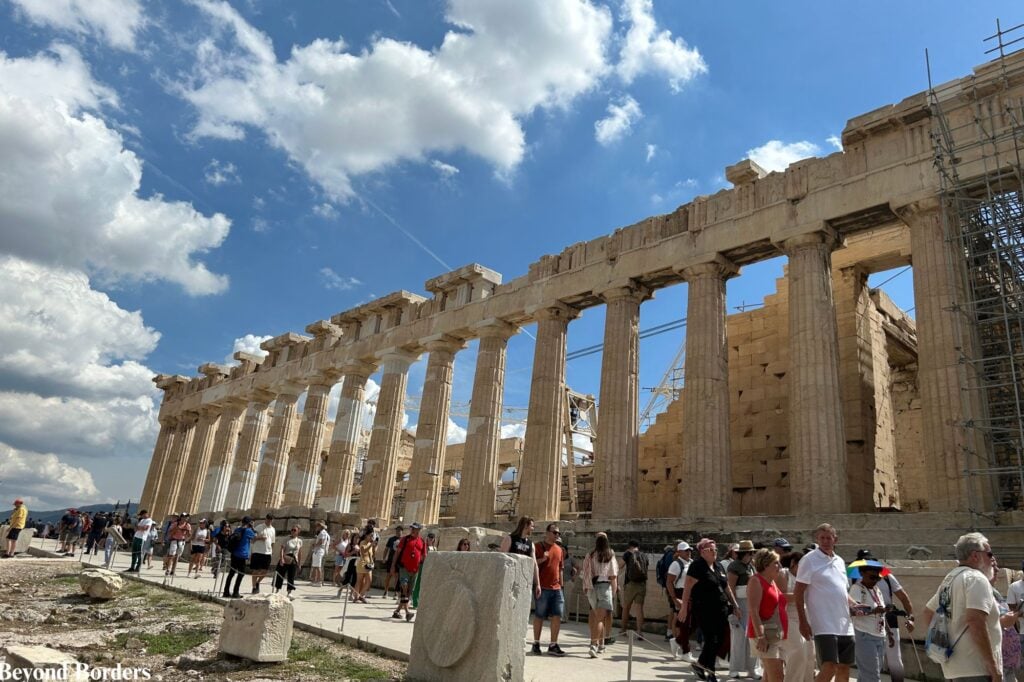
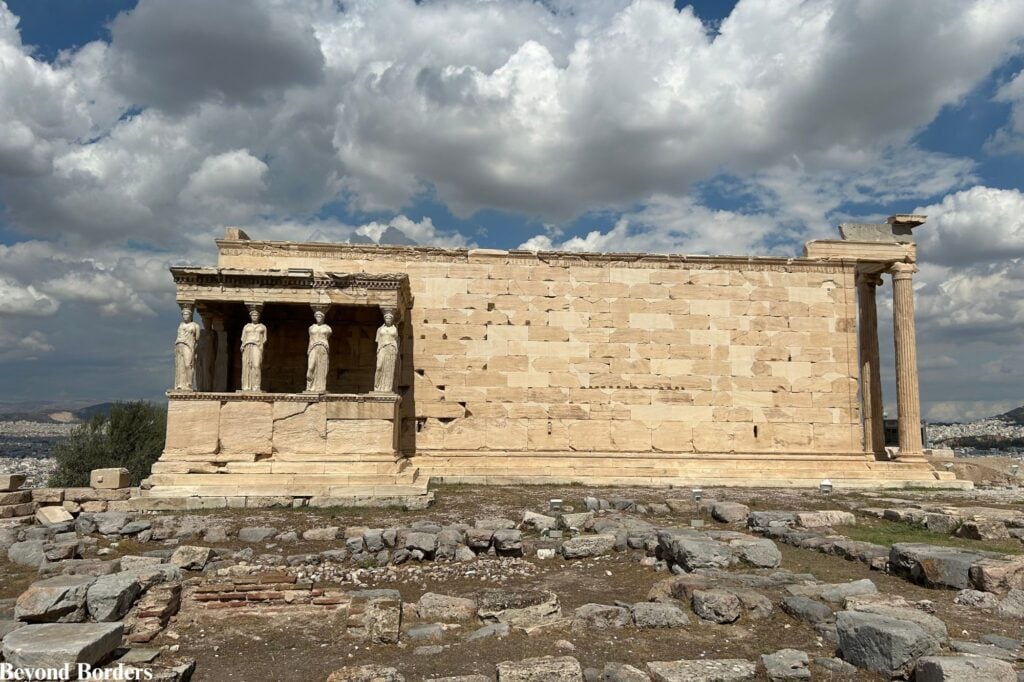
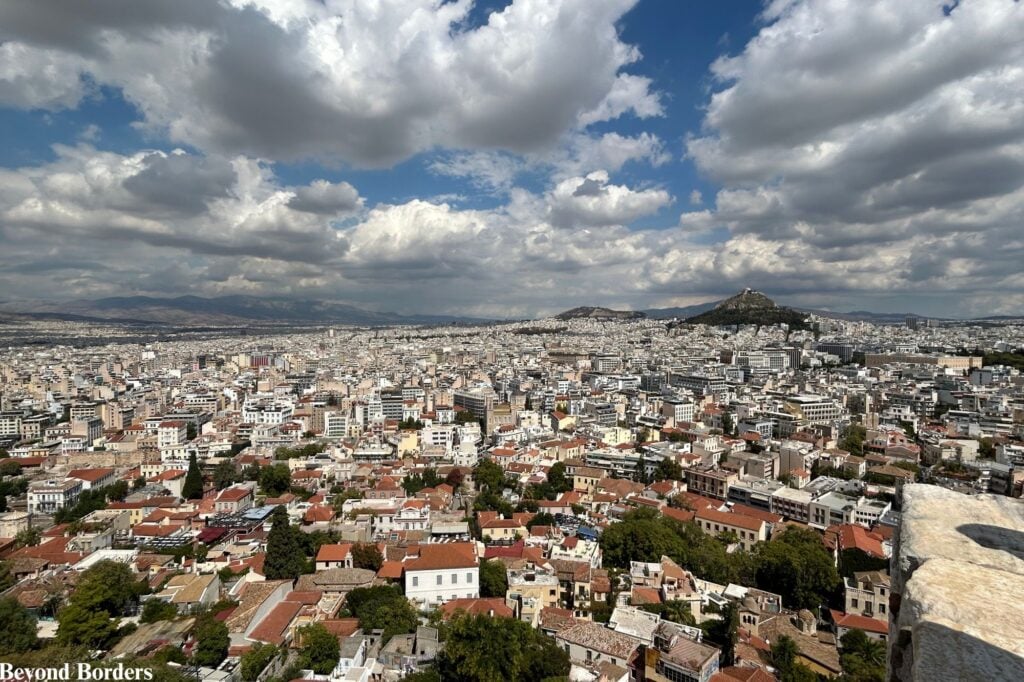
Temple of Olympian Zeus
How to get here: The Temple of Olympian Zeus is a 15-minute walk from the Acropolis. After exiting the Acropolis and going down the steps, make your way to Dionysiou Areopagitou and make a left. Then, make a left onto Leof. Vasilisis Amalias/EO91, and you’ll be at the site!
This temple was the largest temple in Greece, even surpassing the Parthenon. It originally consisted of 104 colossal columns, each standing 56 feet (17 meters) high. Today, only 15 of the original 104 columns are still standing. It was constructed primarily from Pentelic marble, the same high-quality marble used to build the Parthenon. As and after it was built, the white marble sparkled with a subtle golden sheen. Tickets cost €6 per person. Buy tickets on the official website here.
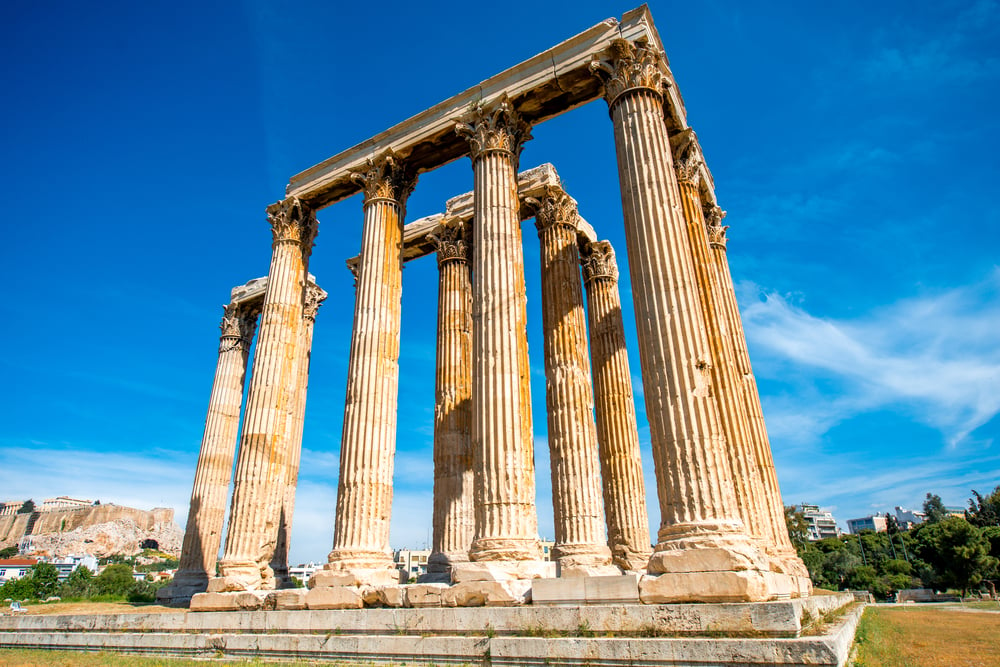
Acropolis Museum
How to get here: The Acropolis Museum is a 10-minute walk from the Temple of Olympian Zeus. Go back to Leof. Vasilisis Amalias/EO91 and make a left. Then make a right onto Dionysiou Areopagitou. Make a left onto Makrigianni, and the museum will be on your right.
The Acropolis Museum is dedicated exclusively to the artifacts found on the Acropolis and its surrounding slopes. The museum has every artifact found on the Acropolis rock and its slopes, from the Greek Bronze Age (around 3200 BCE) to Roman and early Byzantine Greece (around 600 AD). Make sure to visit the third floor of the museum, the Parthenon gallery. It’s a glass-encased hall designed to match the exact dimensions and orientation of the Parthenon itself.
Here, visitors can see the surviving Parthenon frieze, metopes, and pediments displayed as they would have originally appeared on the Acropolis. Spend as much time here as you want to take everything in; there are no more attractions on Day 1. Tickets cost €20 per person. Buy your tickets on the Acropolis Museum website here.
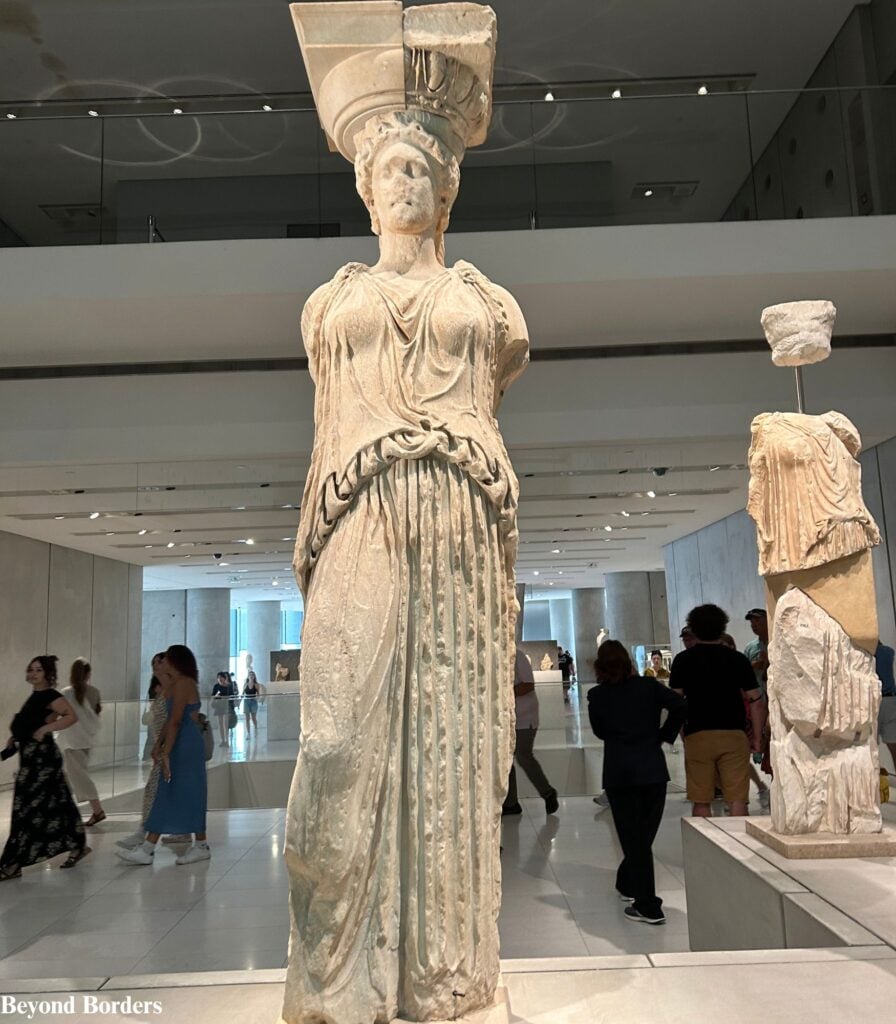
Day 2
National Archeological Museum
How to get here: Take the metro to Biktṓria (Victoria) station. When you leave the station, head east on Chevden towards Patision and make a right. Then make a left onto Vasileos Irakliou and on your right, you will see the National Archaeological Museum garden and the museum.
This museum is the largest archaeological museum in Greece and one of the most important museums globally dedicated to ancient Greek art and civilization. It showcases over 11,000 exhibits, spanning from prehistory (7th millennium BC) through to late antiquity (5th century AD). It has prehistoric antiquities (artifacts from the Neolithic, Cycladic, and Mycenaean civilizations), the largest and most extensive collection of ancient Greek sculptures in the world, and one of the finest collections of ancient Greek metalwork in the world.
The museum also has Egyptian and Cypriot Antiquities. Exhibits are labeled in both Greek and English, providing context for the artifacts. There’s also a museum café. You can easily spend a whole day here! I recommend spending around 4 hours maximum, so you have time to visit the other attractions on this day. Tickets cost €12 per person. Buy tickets on the website here.
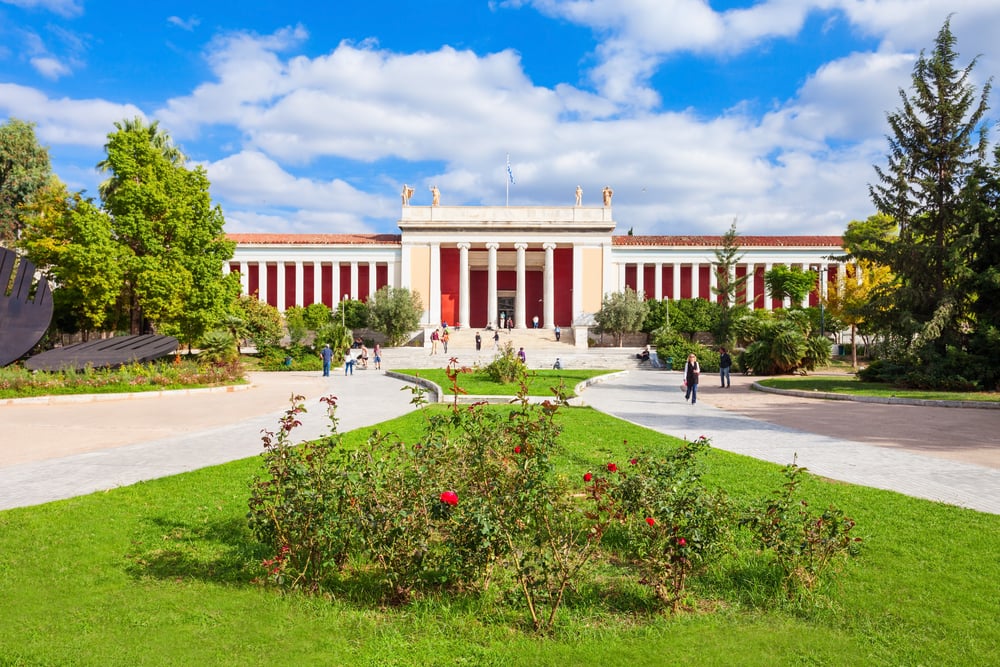
Hadrian’s Library
How to get here: To get here from the museum, walk 25 minutes south from the museum or walk to back to Biktṓria (Victoria) or Omonia station to take line 1 on the metro to Monastiraki station.
Hadrian’s Library was built by the Roman Emperor Hadrian around 132 AD. Hadrian’s Library was much more than just a place for books. It was a comprehensive cultural and intellectual center that also included reading rooms, lecture halls, a large, open courtyard surrounded by columns, and likely a central pool or fountain in the courtyard. Hadrian’s Library is an example of Roman influence in Athens and highlights the city’s continuous importance as an intellectual hub through different historical periods. Tickets cost €10 per person; EU citizens 25 and under go free. Buy tickets on the official website here.
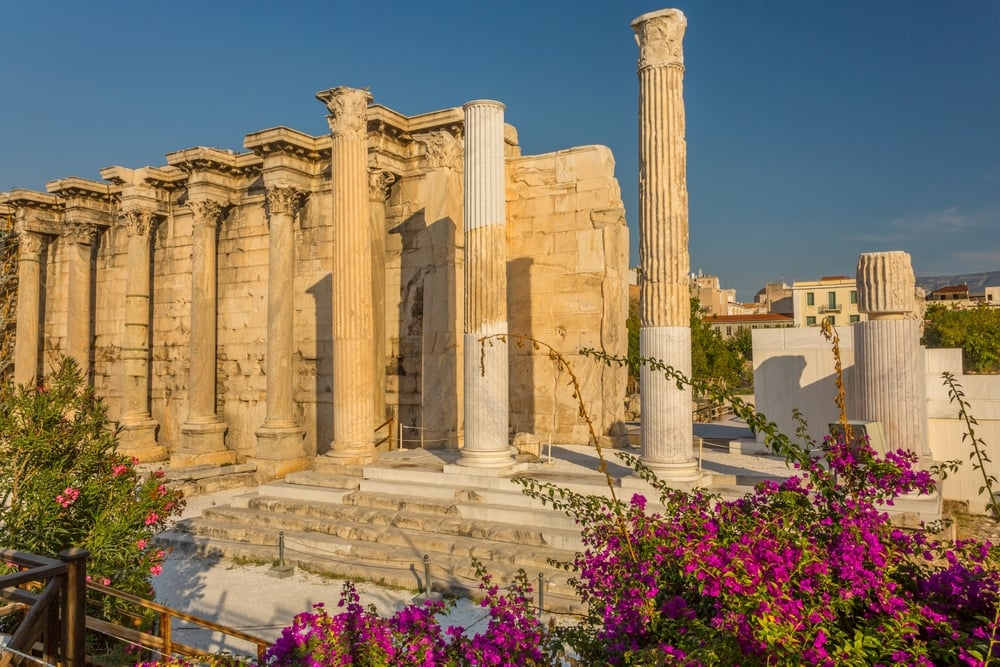
Monastiraki Square
Located right next to Hadrian’s Library, Monastiraki Square is one of the main shopping districts in Athens. Get some lunch at one of the many restaurants and rooftop bars that surround this plaza. A church from the 10th century, the Church of the Pantanassa, is located in the square. On Sundays, the famous Monastiraki Flea Market has everything from antiques and vintage finds to handmade crafts and quirky souvenirs. Spend time walking around, soaking in the lively atmosphere, taking photos, and buying souvenirs!
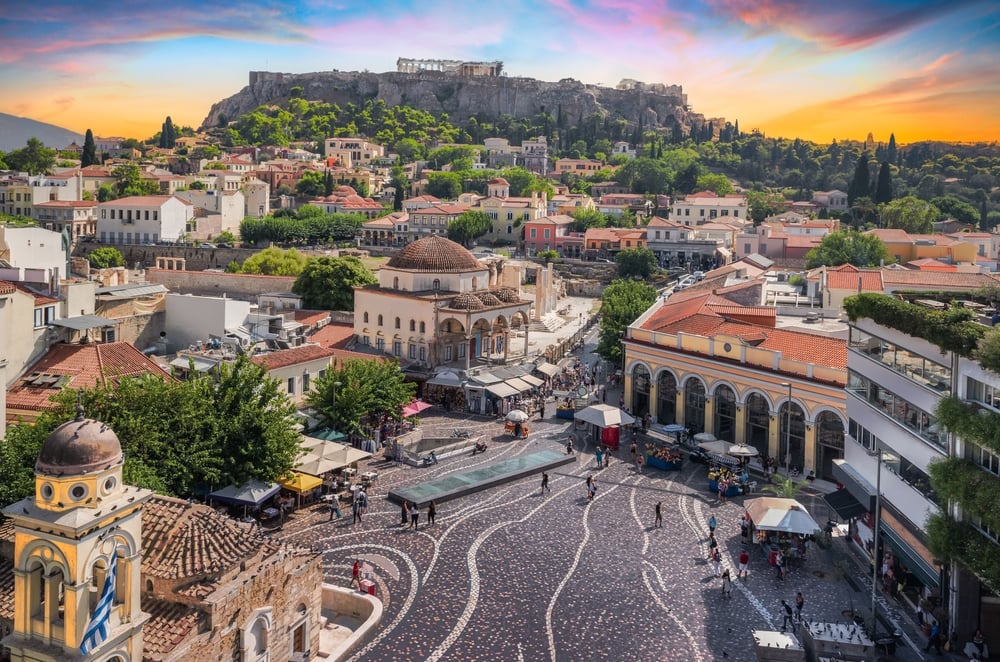
Day 3
Plaka
How to get here: Plaka is located on the northeast side of the Acropolis hill. When you see the Cine Paris outdoor movie theater and what feels like a labyrinth of narrow, winding, pedestrianized streets, you’re in Plaka!
Plaka is one of the oldest and most picturesque historical neighborhoods in Athens, referred to as the “Neighborhood of the Gods” due to its prime location right beneath the Acropolis. Plaka has many small shops selling jewelry, clothes, and locally made ceramics. Most of Plaka’s streets are closed to automobile traffic, making it ideal for exploration on foot. There are several cafes and traditional tavernas where you can enjoy authentic Greek cuisine. Many offer outdoor seating, perfect for people-watching!

Anafiotika
How to get here: The easiest way to access Anafiotika is usually by taking the stairs near the Church of St. George of the Rock, often found by walking along Stratonos Street, which is a continuation of Kydathinaion Street in Plaka.
Anafiotika is a tiny, quiet, more picturesque neighborhood in Plaka. Anafiotika has an uncanny resemblance to a Greek island village, specifically those of the Cyclades. This is by design. You’ll find architecture like that of the Greek islands, including:
Whitewashed Cubic Houses: Simple, boxy structures with thick, whitewashed walls.
Flat Roofs: Common in the islands to collect rainwater.
Brightly Colored Doors and Windows: Often vibrant blue or red, adding pops of color against the white.
Narrow, Winding Alleys: Not really “streets” with names, but rather hand-cobbled footpaths that weave tightly around the closely clustered homes, often ending in dead ends or staircases.
You’ll also find a couple of small, historic Byzantine churches within Anafiotika.
Anafiotika offers a serene escape within Athens, making you feel like you’re on a Greek island! Remember: When in Anafiotika, you are walking around people’s homes. Keep noise levels down, respect private property, and avoid peering into windows.

Ancient Agora and Museum of Ancient Agora
How to get here: Walk 5 minutes from the Ancient Agora. After exiting the Ancient Agora, make your way to Polignotou and make a left. Then, make a left onto Dioskouron, and the Roman Agora entrance will be on your right.
The museum of the Ancient Agora (Stoa of Attalos) is the building on the eastern side of the Ancient Agora. The Stoa of Attalos was built between 159 and 138 BC and served as an ancient “shopping mall” and public gathering space where locals could walk around, meet, socialize, discuss politics and philosophy, and conduct business. Today, the Stoa of Attalos houses the Museum of the Ancient Agora. The museum contains artifacts unearthed during the extensive excavations of the Agora, ranging from prehistoric times to the Roman and Byzantine periods.
Make sure to also visit the Temple of Hephaestus! This temple is one of the most well-preserved ancient Greek temples and was built in the 5th century BC. Visitors get a clear and tangible impression of classical Greek temple architecture at its finest.



Roman Forum (Roman Agora)
How to get here: Walk 5 minutes from the Ancient Agora. After exiting the Ancient Agora, make your way to Polignotou and make a left. Then, make a left onto Dioskouron, and the Roman Agora entrance will be on your right.
The Roman Agora was built in the 1st century BC. It was a significant commercial center during the Roman period; it served as the city’s central marketplace and commercial hub under Roman rule. Its construction was funded by Julius Caesar and later by Emperor Augustus. Tickets cost €10 per person; EU citizens 25 and under go for free. Buy tickets on the official website here.
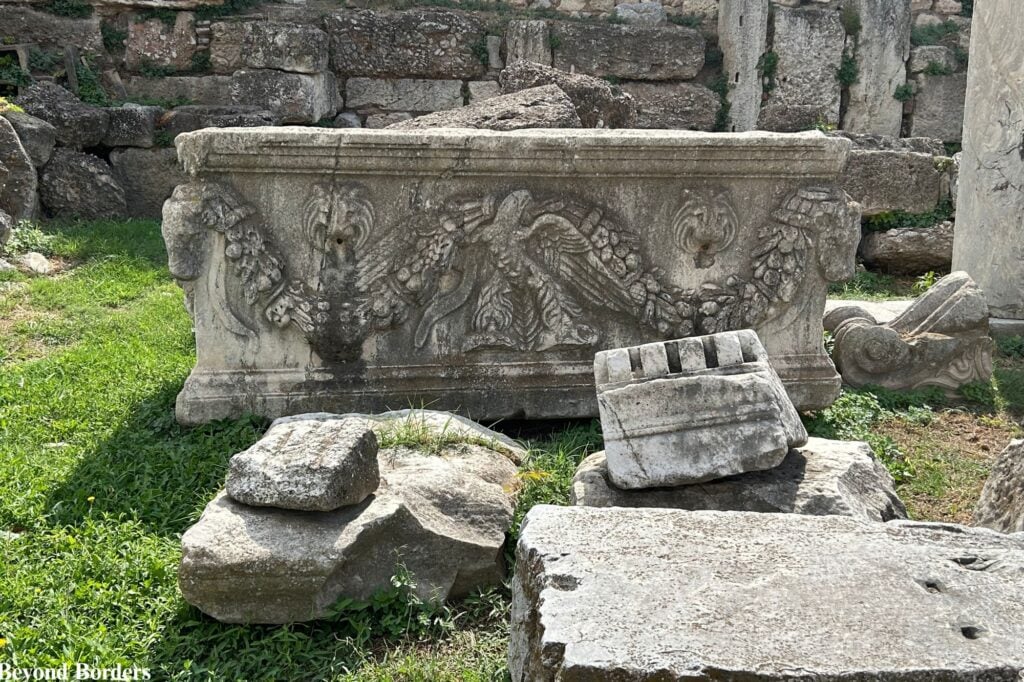
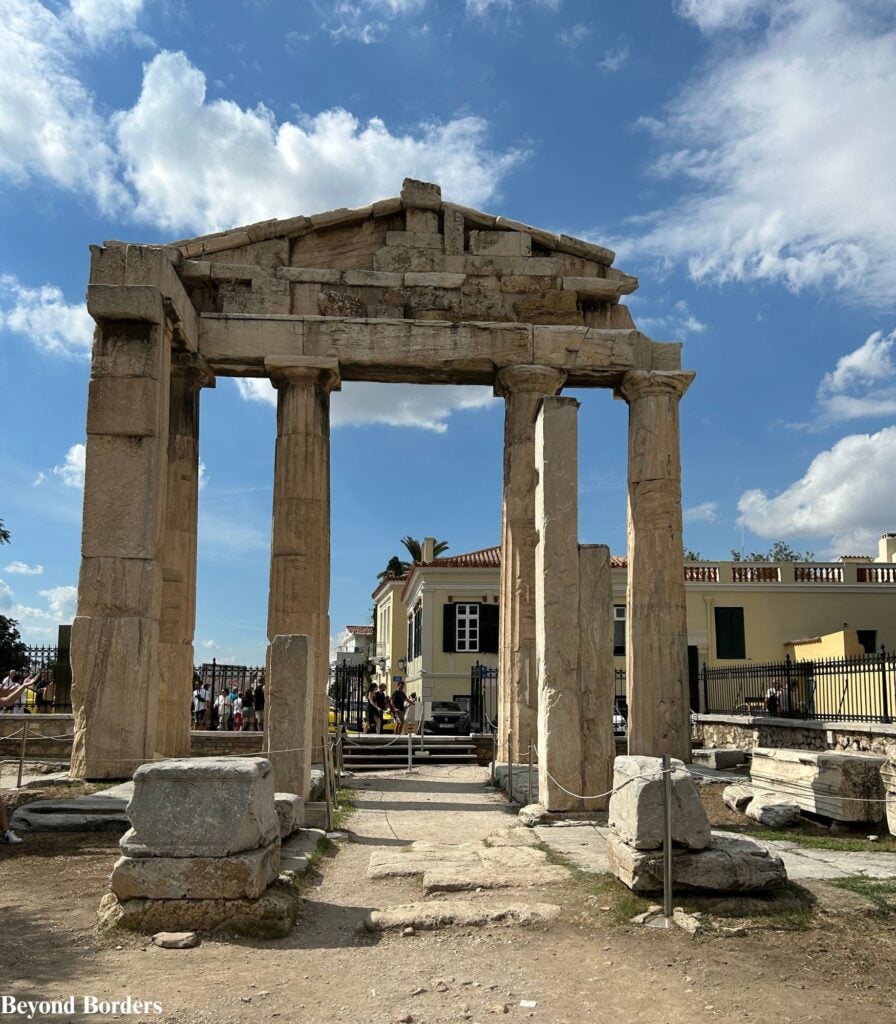
Alternative Attractions
If you have extra time, want to try something else, or if any attractions are too crowded for your liking or are unexpectedly closed, here are some other things to do:
Philopappos Hill
Philopappos Hill is a public park on the southwestern side of the Acropolis. It is actually one of the three prominent hills surrounding ancient Athens, alongside the Acropolis and the Pnyx. The hill provides unparalleled 360-degree views of Athens, including the Parthenon on the Acropolis, the Ancient Agora, Lycabettus Hill, and the Olympic Stadium. There are visible walking paths that make it easier to hike up the hill, along with plenty of olive trees! If you want to see the Acropolis and the Parthenon without having to pay €30, hike up Philopappos Hill. Visitors say the hike to the summit is generally considered easy, but they recommend coming prepared as there are no restrooms, and bringing water and sunscreen.
Archaeological Site of Sounion
Far less crowded than the Acropolis, these ruins contain the Temple of Poseidon with stunning views of the Aegean Sea and are an hour’s drive south of Athens. There are many tours offered on Viator or GetYourGuide if you want to see these ruins. Tickets cost €20 per person. This archaeological site is not listed on the website to purchase tickets that I listed at the top of this itinerary, so tickets have to be purchased elsewhere or at the site. If you are visiting during peak season, purchase tickets online rather than at the site.
Lake Vouliagmeni
This lake is recognized as a natural monument in Greece and is located on the Athenian Riviera, about a 40-minute drive south of Athens. Nestled along dramatic limestone cliffs, it is a captivating natural thermal lake, famous for its unique geological formation and therapeutic properties. The lake’s brackish water, which formed from the collapse of an ancient cavern, offers a year-round swimming experience thanks to its consistently warm, mineral-rich waters. You can find tours that include both the lake and the Temple of Poseidon on Viator or GetYourGuide if you want to see both.
Athens National Garden (Ethnikos Kipos)
This garden is a beautiful and expansive 38-acre public garden and park. It is rich in history, natural beauty, and also has some ancient ruins. It is located in central Athens, directly behind the Hellenic Parliament building (the former Royal Palace) and adjacent to Syntagma Square. It is home to over 500 plant species. Take the metro to Syntagma station to access the garden.
Athens Metro Mall
The Athens Metro Mall is a significant shopping and entertainment complex in the southern suburbs of Athens. Spanning five levels, it offers a comprehensive shopping and dining experience with over 80 retail stores featuring both international and Greek brands. The mall also has numerous restaurants and cafes providing a wide array of dining options. For more shopping or to simply enjoy the cool air indoors, this mall is an excellent choice. Take the metro to Aghios Dimitrios station on metro line 2 to get to the mall.
Where should you stay?
Luxury: King George, a Luxury Collection Hotel, Athens; Athens Capital Hotel–MGallery Collection.
King George, a Luxury Collection Hotel, Athens is in the heart of Athens, close to Syntagma and the Syntagma metro station. Guests appreciate the location and service, but note the small rooms. Athens Capital Hotel–MGallery Collection is actually across the street from the King George Hotel. Guests loved the kind and helpful staff, comfortable beds, and breakfast.
Mid-range: Coco-Mat Athens BC; Herodion Hotel.
Coco-Mat Athens BC is located close to the Acropolis and the Acropolis Museum and a 5-minute walk from the Sygrou–Fix metro station. Guests loved the location, staff, and the hotel’s modern look. Prices for this hotel are vastly different depending on where you make a reservation, but you can find prices for just over $200 per night. The Herodion Hotel is actually walking distance from Coco-Mat Athens BC, very close to the Acropolis. Guests loved the breakfast, hospitable staff, and clean rooms.
Budget: COLORS Hotel Athens; Brown Acropol/Brown Kubic, members of Brown Hotels.
All of these hotels are listed as 4-star hotels, but the prices consistently stay under or just above $100 per night. COLORS Hotel Athens is located near the National Archaeological Museum and a 5-minute walk from the Omonia metro station. Guests like the clean rooms, location, and hospitable staff. Brown Acropol and Brown Kubic are part of the same brand, also near the National Archaeological Museum. Brown Acropol is close to the COLORS Hotel and the Omonia metro station. Guests appreciate the spacious rooms and excellent location. Brown Kubic is around the corner from Brown Acropol, close to Omonia metro station as well. Guests liked the breakfast and clean rooms.
Food Recommendations
- Taverna Klimataria
- Taverna Saita (in Plaka)
- Lefkes and Lefkes on the Side: next to each other and located in northern Athens. Lefkes on the Side is a brunch restaurant. They also have a location on Santorini.

